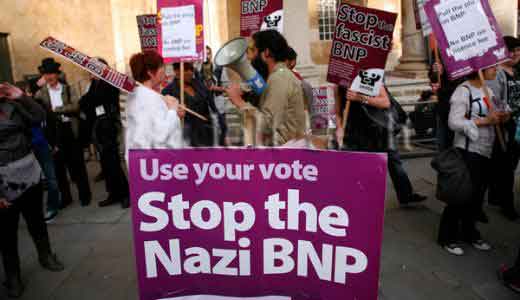
Norway, population 5 million, was rocked July 22 by two of the most heinous terrorist acts in recent history. First, a massive bomb, evidently made from fertilizer and chemicals (remember Timothy McVeigh), rocked downtown Oslo, the capital, wrecking government buildings and killing eight people. Two hours later, a man dressed as a policeman appeared at a youth camp organized by the Labor Party, part of Norway’s ruling coalition, on the island of Utøye, and opened fire, killing at least 68 young people.
The perpetrator of both incidents was Anders Behring Breivik, born in 1979, who was known for extremist anti-Muslim, anti-Marxist and anti-immigrant views, but who did not have a known prior history of violence. This was in spite of initial speculation that Islamic extremists could have been to blame, perhaps exacting revenge for Norway’s participation in the Afghanistan War as part of NATO. Breivik is now under arrest, and is by no means denying his actions, which he sees as “necessary.” The immediate questions that remain are:
Was there, or is there, a wider conspiracy? (Breivik talks about two other “cells,” but police doubt it). And: Is Breivik mentally ill, as his lawyer claims? The more important question, about the political roots and ramifications of Breivik’s terroristic act, must be raised.
A short while before his rampage, Breivik distributed a 1,516 page screed, titled “2083: A European Declaration of Independence.” The number evokes the year 1683, when Christian troops headed by King Jan Sobieski of Poland repelled the last attempt of the Ottoman Turkish Empire to capture Vienna. The memorandum, published under the pseudonym of Andrew Berwick (perhaps a reference to James Fitzjames, First Duke of Berwick, an illegitimate son of King James II of England and VII of Scotland, and another general who fought against the Turks), is a denunciation of supposed imminent Muslim takeover of Europe, including Norway, in which the Christian peoples will be forced to submit to Sharia law and the status of “dhimmitude,” the inferior, but tolerated, status of Christian communities within the old Ottoman Empire.
Breivik blames multicultural policies and “Marxists,” as well as feminism and women in general for this coming catastrophe. The suggestion is that the targets were selected because of Breivik’s idea that the current left-center coalition government of the Labor Party (of Prime Minister Jens Stoltenberg), the Socialist Left Party and the Center Party has opened Norway’s gates to massive Muslim and other foreign immigration.
Breivik’s manifesto is full of iconic European historical references. He claims to be part of a movement to restore the Knights Templar. This order of knights was established during the Crusades, in 1120 AD, with the purpose of providing protection for Christian Pilgrims to Jerusalem. The Templars were ferocious anti-Muslim warriors, but also shrewd bankers and financial managers, and eventually became wealthy and powerful in Western Europe. They were violently suppressed in 1312, by King Philip IV of France, who owed them money and did not feel like repaying it.
In current European and U.S. culture, there is interest in a supposed survival of the Knights Templar, which shows itself in fictional works like Dan Brown’s The DaVinci Code. This resonates with mystical chords in the minds of some romantic fantasists.
Breivik also toys with Masonic imagery, but there are no indications of an actual connection with Freemasons. Some sources refer to Breivik as a Christian “fundamentalist” but this appears to be a misapplication of the term; “white Christian bigot” would seem to be closer to the mark.
And in that, Breivik is not alone. Unlike many violent European ultra-rightists, Breivik is not an anti-Semite and in fact admires Israel as a staunch ally against the Muslim “invasion.” He also sees anti-Muslim Hindu nationalists, and, for good measure, Vlad Dracula, “the Impaler” of Medieval Romania who was the inspirer of Bram Stoker’s Count Dracula, as heroic anti-Muslim fighters.
Norway is part of NATO but not of the European Union; nevertheless it has been receiving a fair number of new immigrants lately. About 12.2 percent of the population is foreign born, a figure slightly less than that of the United States (12.8 percent). The largest numbers of foreign-born people in Norway are from Poland (about 60 thousand), followed by Sweden (34 thousand), Pakistan (32 thousand) and Iraq (28 thousand).
Most new immigrants are settled in Oslo and other major cities. Though this has changed the physical complexion of the country, it is hard to see it as a new “Muslim invasion.” However, Breivik is not alone in weaving conspiracy theories on the theme: Paranoid accusations against Muslim immigrants coming to impose Sharia law, denunciations of multiculturalism and rants about Marxism are common not only in Norway, but all over Europe and the United States. Many people on the U.S. right have been snookered into the idea that the city of Dearborn, Michigan, is under Sharia law, a complete falsehood.
The combination of new immigration with the economic and financial crisis that started with the U.S. mortgage meltdown of 2008 has led to new anti-immigrant aggression all over Europe. The worst of these come out of fringe right-wing groups, but major conservative leaders in politics and the media have been harping on the theme, probably as a way of deflecting public anger from their own failed policies. These include British Prime Minister David Cameron, Italian Prime Minister Silvio Berlusconi and French President Nicolas Sarkozy. In the United States, anti-immigrant and especially anti-Muslim hysteria is stock in trade for the Republican right, including the tea party, and such media personalities as Glenn Beck.
In Europe, all major political groupings from communists to monarchists denounced the massacre, but some people broke ranks and seemed to condemn the victims and praise or sympathize with Breivik. In the United States, Glenn Beck caused outrage by comparing the Norwegian Labor Party’s youth camp with the Hitler Youth.
Whether Breivik is technically “insane,” as his attorney claims, or not will be decided by the courts as advised by medical experts. The longest prison term in Norway, which has no death penalty, is 21 years. But in the court of world public opinion, the ideologues and agitators who have been playing with fire by whipping up anti-foreign and anti-Muslim sentiments are now in the dock.
Photo: Protest against the extremist British National Party, a Nazi-like organization with representatives in the European parliament. Rude Cech // CC 2.0












Comments